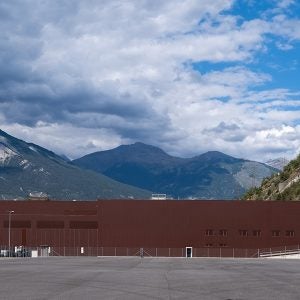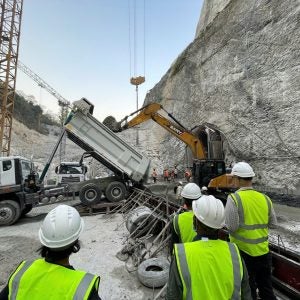 The latest issue of Dam Engineering (Volume XXXI, Issue 1) has been published:
The latest issue of Dam Engineering (Volume XXXI, Issue 1) has been published:
Material properties investigation and finite element analysis of Idukki Dam in India
By Brijesh Singh, P N Ojha, V V Arora, Pramod Narayan & Bikram K Patra
Abstract: Large dams are associated with certain risk hazards to downstream communities, properties and environment at times of extreme events like earthquakes and unprecedented floods. These dams are complicated structures, expected to withstand these events without unacceptable damages. Due to ageing, dam materials are subjected to severe weather impacts that affect the strength and ultimately the operational performance of these structures. Therefore, in order to ensure expected operational performance, comprehensive safety reviews of such massive structures are warranted. This paper presents a case study of Idukki Dam, the only arch dam in India currently undergoing safety reviews as part of the country’s ongoing Dam Rehabilitation & Improvement Project (DRIP). The main objective of this paper is to highlight the findings of various material properties of Idukki Dam, and use the actual material and other input parameters to establish confidence in numerical modelling by tallying dam behaviour from the outcome of a FEM model through instrumentation monitoring. The present study scope was limited to the effect of static and thermal loads for the discontinuous model with galleries for the combination of ambient temperature and water level. The thermostatic analysis results, i.e. displacement vectors obtained from the ABAQUS package, are in conformation with the observed dam behaviour, as per instrumentation data, and the results are more accurate when the vertical joints are taken into consideration.
Three-dimensional seepage analysis in foundation and abutments of Karun III concrete arch dam
By A Hosseinzadeh, A Soroush, V Lotfi & M Nobarinasab
Abstract: This paper presents the results of three-dimensional steady-state seepage analysis in the foundation and abutments of the Karun III Dam. The dam is a double curvature concrete type with a height of 205m, making it the second highest dam in Iran. The dam, foundation and its abutments are extensively instrumented; among the instruments are rock piezometers installed both upstream and downstream of the grout curtain. The present study compares the results (in terms of pore water pressure) from the numerical analysis with the measured data from the piezometers, and shows that reasonable agreement exists between the two results. It also evaluates efficiencies of the grout curtain at different levels and sections of the foundation and abutments. Additionally, back analysis has been carried out in order to detect better agreement between the computed and measured pore water pressures. Based on the back analysis, modified values for coefficient of permeability of the foundation rock are suggested.
Contact us for more information: For information on submitting papers or becoming a referee for Dam Engineering, please contact: Tracey Honney, Content Manager, Email: tracey.honney@ns-mediagroup.com
To order your copy, or to subscribe, please visit www.buythatmag.com/product/dam-engineering






